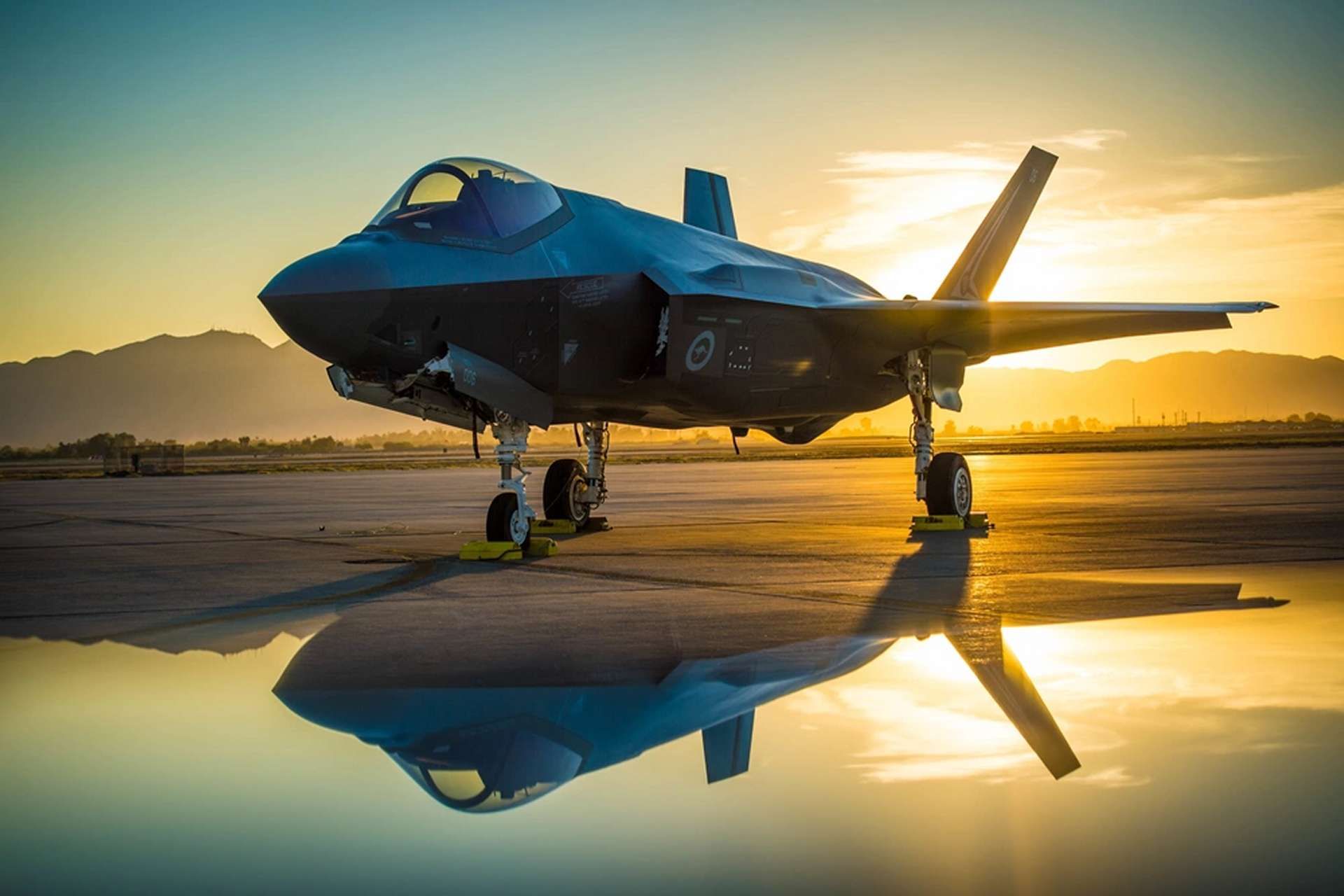
The recent Victory Day parade in China offered the world an unprecedented glimpse into Beijing’s rapidly evolving military capabilities, marking the 80th anniversary of Japan’s defeat and the end of the Second World War. While the procession featured an array of imposing hardware, from nuclear-capable missiles to advanced drones, a deeper analysis reveals a significant underlying narrative: China’s intense focus on sophisticated sensor technologies, particularly radar systems, which are poised to redefine modern warfare. This emphasis signals a strategic shift, underscoring that the true advancements often lie not just in kinetic weapons, but in the unseen eyes and ears that guide them.
Beyond the visible spectacle of tanks and long-range missiles, the exhibition of more than 100 advanced radar systems at the 11th World Radar Expo in Hefei, alongside those displayed in the parade, highlights China’s commitment to achieving a decisive technological edge. These developments are not merely incremental upgrades; they represent a concerted effort to counter established military doctrines, particularly in areas like stealth detection and hypersonic target tracking, which have long been dominated by Western powers. The global security landscape is increasingly shaped by such innovations, prompting a re-evaluation of defense strategies worldwide.
This article delves into the technological prowess showcased by China, moving beyond the sheer power of its new weaponry to explore the intricate, often revolutionary, radar systems and advanced platforms that underpin this modernization drive. From “stealth killer” radars designed to unmask advanced aircraft to cutting-edge photonic systems capable of tracking ultra-high-speed threats, Beijing is demonstrating a sophisticated approach to defense and offense. We will examine some of the most impressive of these systems, understanding their reported capabilities and the potential implications they hold for international security.
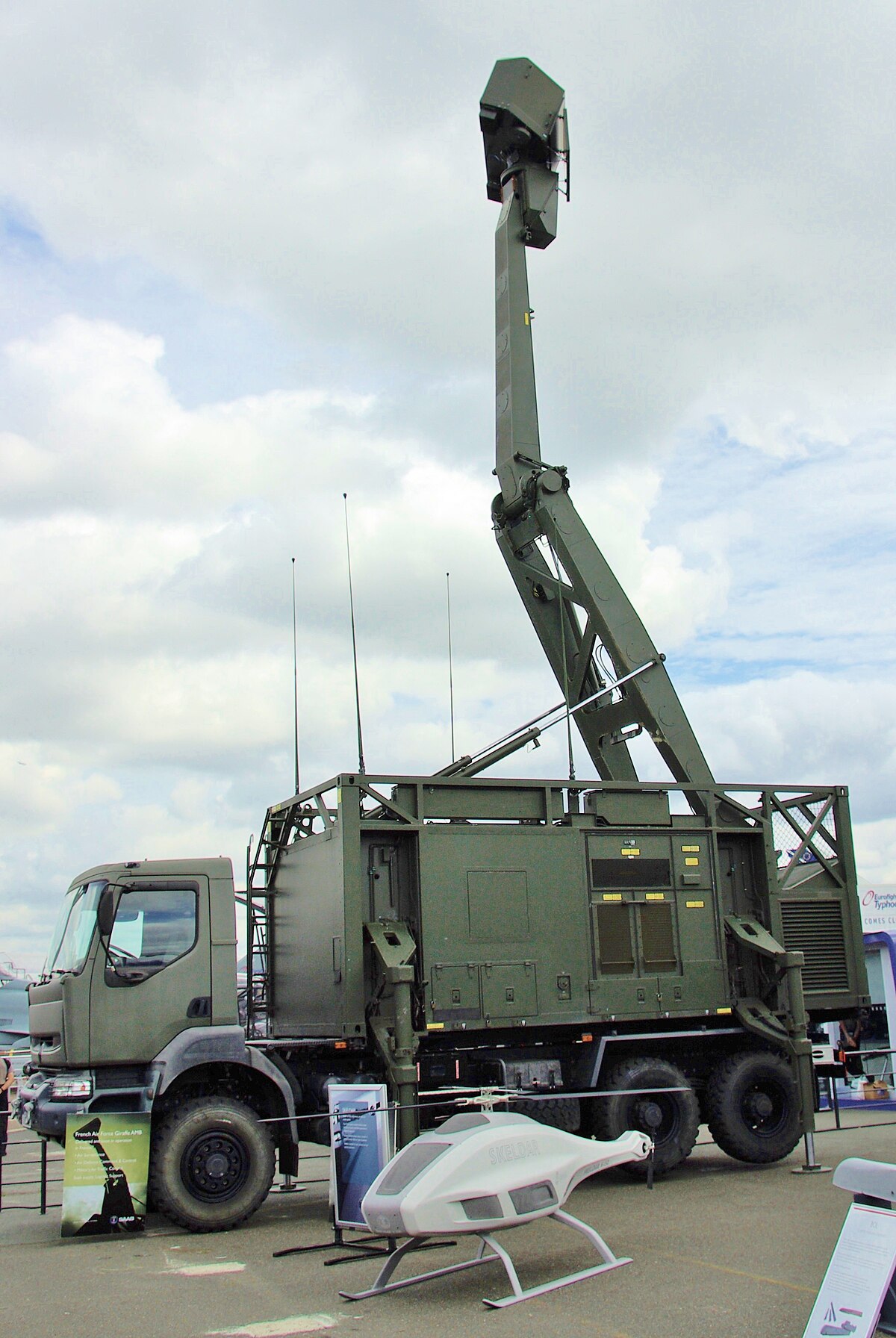
1. **JY-27V “Stealth Killer” Meter-Wave Mobile Radar**One of the most notable revelations from China’s recent technological showcases is the JY-27V “stealth killer” meter-wave mobile radar, presented as the main attraction at the 11th World Radar Expo in Hefei. Developed by CETC, this system is explicitly designed to detect and track fifth-generation stealth fighters, such as the American F-22 Raptor and F-35 Lightning II, which have long been considered almost undetectable by conventional radar. Its very designation as a “stealth killer” underscores a direct challenge to the aerial superiority afforded by stealth technology.
The JY-27V is mounted on a military truck, emphasizing its mobility and rapid deployment capability; it can reportedly be deployed in just 10 minutes. This operational agility allows it to be quickly positioned and repositioned on the battlefield, enhancing its survivability against counter-attacks and extending its coverage across vast areas. The use of low-frequency bands is a critical aspect of its design, as these frequencies are known to be more effective against stealth aircraft, which are primarily optimized to evade higher-frequency radar signals.
Furthermore, the system incorporates a big aperture and advanced algorithms, which work in tandem to spot low-Radar Cross Section (RCS) targets. The combination of these features allows the JY-27V not only to detect stealth aircraft but also to guide accurate air-defense strikes against them, effectively integrating detection with engagement capabilities. This comprehensive approach signifies a mature development in counter-stealth technology, moving beyond mere detection to actionable intelligence for defense.
CETC reports that the JY-27V’s improved stealth detection is further enhanced by its bigger antenna, lower frequency, and updated algorithms, building upon its predecessors. Radar scientist Xu Haizhou highlighted the system’s folding mechanism as both easy and quiet, contributing significantly to its overall mobility and operational secrecy. This blend of powerful detection, sophisticated processing, and practical deployment characteristics positions the JY-27V as a pivotal asset in China’s evolving air defense architecture.
Military equipment: Heavy Expanded Mobility Tactical Truck
Manufacturer: Oshkosh Corporation
Categories: Army Equipment, Army Vehicles, Marine Corps Equipment, Marine Corps Vehicles, Military Vehicles
Get more information about: Heavy Expanded Mobility Tactical Truck

2. **YLC-8E UHF Radar System**In conjunction with the high-profile JY-27V, CETC also unveiled the YLC-8E, a UHF radar system equipped with digital phased array technology. This system is specifically designed for long-range early warning, providing critical situational awareness across wide geographical expanses. The deployment of such a system indicates China’s strategic intent to bolster its outer perimeter defenses and monitor airspaces far from its immediate borders.
Digital phased array technology is a significant feature of the YLC-8E, offering superior performance compared to traditional mechanically scanned radars. This technology allows for rapid beam steering, enabling the radar to track multiple targets simultaneously and adapt its scanning patterns to different threats with exceptional speed and precision. Such capabilities are vital for early detection of incoming aerial threats, including both conventional and stealth platforms, giving valuable time for defensive responses.
The UHF band, or Ultra-High Frequency, utilized by the YLC-8E, also offers advantages for long-range detection and improved penetration through adverse weather conditions. While lower frequencies like those used by the JY-27V are effective against stealth, UHF radars strike a balance, providing good detection range and some level of stealth detection capability, albeit less specialized than meter-wave systems. This layered approach to radar deployment demonstrates a comprehensive strategy for air defense.
By presenting the YLC-8E, China is signaling its advancements in broad-area surveillance and early warning systems, crucial components of any modern air defense network. The emphasis on digital phased array technology confirms a commitment to high-performance, adaptable systems that can operate effectively in complex and contested environments. This contributes to a robust integrated air defense system, enhancing China’s ability to maintain aerial domain awareness.
Military equipment: List of radars
Categories: Aircraft radars, All accuracy disputes, All articles containing potentially dated statements, All articles with unsourced statements, Articles containing potentially dated statements from 2010
Summary: A radar is an electronic system used to determine and detect the range of target and maps various types of targets. This is a list of radars.
Get more information about: List of radars
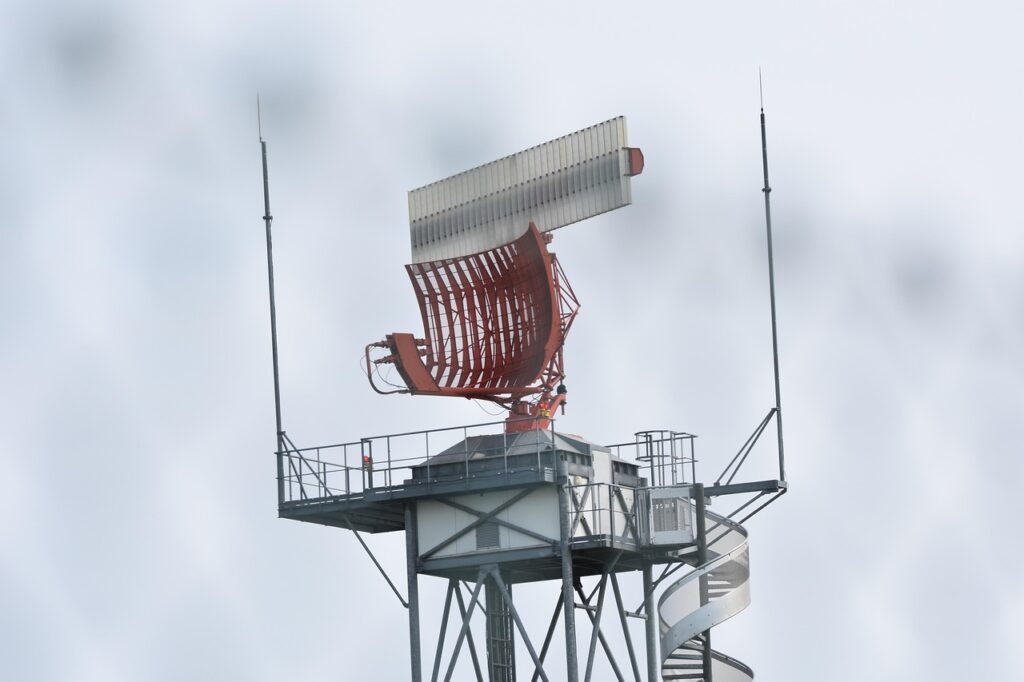
3. **SLC-7 Fourth-Generation Radar**Another significant radar system showcased by CETC was the SLC-7 fourth-generation radar, designed with the explicit purpose of tracking and engaging several targets with great accuracy. Its advanced capabilities extend to possessing strong anti-jamming features, a crucial attribute in modern electronic warfare scenarios where adversaries frequently attempt to disrupt or blind radar systems. The ability to maintain operational integrity under such conditions is paramount for effective defense.
The SLC-7’s designation as a “fourth-generation” radar implies a leap in technological sophistication, likely incorporating advanced digital signal processing, artificial intelligence, and sophisticated algorithms for target discrimination and tracking. This allows the system to differentiate between multiple threats, assess their trajectories, and provide precise targeting data to integrated weapon systems. The emphasis on accuracy suggests its role in guiding precision interceptors.
Anti-jamming capabilities are not merely an added feature but a necessity for front-line radar systems. The SLC-7’s strong resistance to electronic countermeasures ensures that it can continue to provide reliable information even when faced with sophisticated jamming attempts. This resilience is critical for maintaining an uninterrupted air picture and for preventing an adversary from achieving air superiority through electronic warfare.
The introduction of the SLC-7 underscores China’s commitment to developing resilient and highly capable radar systems that can operate effectively in a contested electromagnetic spectrum. Its design for accurate multi-target tracking and robust anti-jamming defense makes it a versatile asset, suitable for various air defense roles, from strategic surveillance to tactical engagement. These radar systems collectively form a formidable network designed to detect, track, and counter a wide array of aerial threats.
Military equipment: Naval Ocean Surveillance System
Categories: All Wikipedia articles written in American English, Articles with short description, Derelict satellites orbiting Earth, Military equipment introduced in the 1970s, Military space program of the United States
Summary: The Naval Ocean Surveillance System (NOSS) is a series of signals-intelligence satellites that have conducted electronic signals intelligence for the U.S. Navy since the early 1970s. The first series of satellites were codenamed “White Cloud” or “PARCAE”, while second- and third-generation satellites have used the codenames “Ranger” and “Intruder”.
The system is operated by the United States Navy, and its main purpose was tactical geolocation of Soviet Navy assets during the Cold War. NOSS involves satellite clusters operating in low Earth orbit to detect radar and other electronic transmissions from ships at sea and locate them using the time difference of arrival technique.
Get more information about: Naval Ocean Surveillance System

4. **Microwave Photonic Radar (Zheng Xiaoping’s Team)**Perhaps one of the most intriguing technological advancements highlighted by Chinese scientists is the development of a microwave photonic radar, led by Professor Zheng Xiaoping’s team at Tsinghua University. This groundbreaking radar is reported to be capable of tracking an astonishing ten incoming hypersonic missiles simultaneously, even at speeds of Mach 20, and with unprecedented precision. The ability to accurately monitor such high-velocity, maneuverable targets represents a significant leap in missile defense capabilities.
The precision claimed for this system is particularly striking: during ground-based simulations, the new radar demonstrated an error of only 28 centimeters (11 inches) in estimating the distance of a missile traveling at nearly 7 kilometers (4.3 miles) per second. Furthermore, its accuracy in estimating the missile’s speed reached an astounding 99.7 percent. Such levels of precision were previously considered impossible, underscoring the revolutionary nature of this technology in the realm of high-speed target tracking.
A key innovation that underpins this performance is the incorporation of lasers into the radar system. This design choice enables information transmission between crucial nodes to reach the speed of light, overcoming the limitations of traditional electronic circuits where electrons moving at high speeds could cause burnout. By leveraging photonics, Zheng’s team has managed to generate and process microwave signals far more complex than previously possible, directly contributing to the radar’s exceptional measurement capabilities for ultra-high-speed objects.
The microwave photonic radar also boasts a substantial detection range of over 600 kilometers, making it suitable for wide-area surveillance and early warning against advanced threats. Its compact size and light weight are significant operational advantages, rendering it suitable for integration into air-defense missiles or even aircraft. Military experts are already considering this technology to be a key component for the next generation of fire-control radars, potentially reshaping the future of missile defense.
Military equipment: E-2C Hawkeye
Manufacturer:: Northrop Grumman
Service:: USN
Airspeed:: 300 kts
Crew:: Five
Range:: 1,462 nm
Categories: Military Aircraft, Navy Aircraft, Special Mission Aircraft, Surveillance Aircraft, Navy Equipment
Get more information about: E-2C Hawkeye
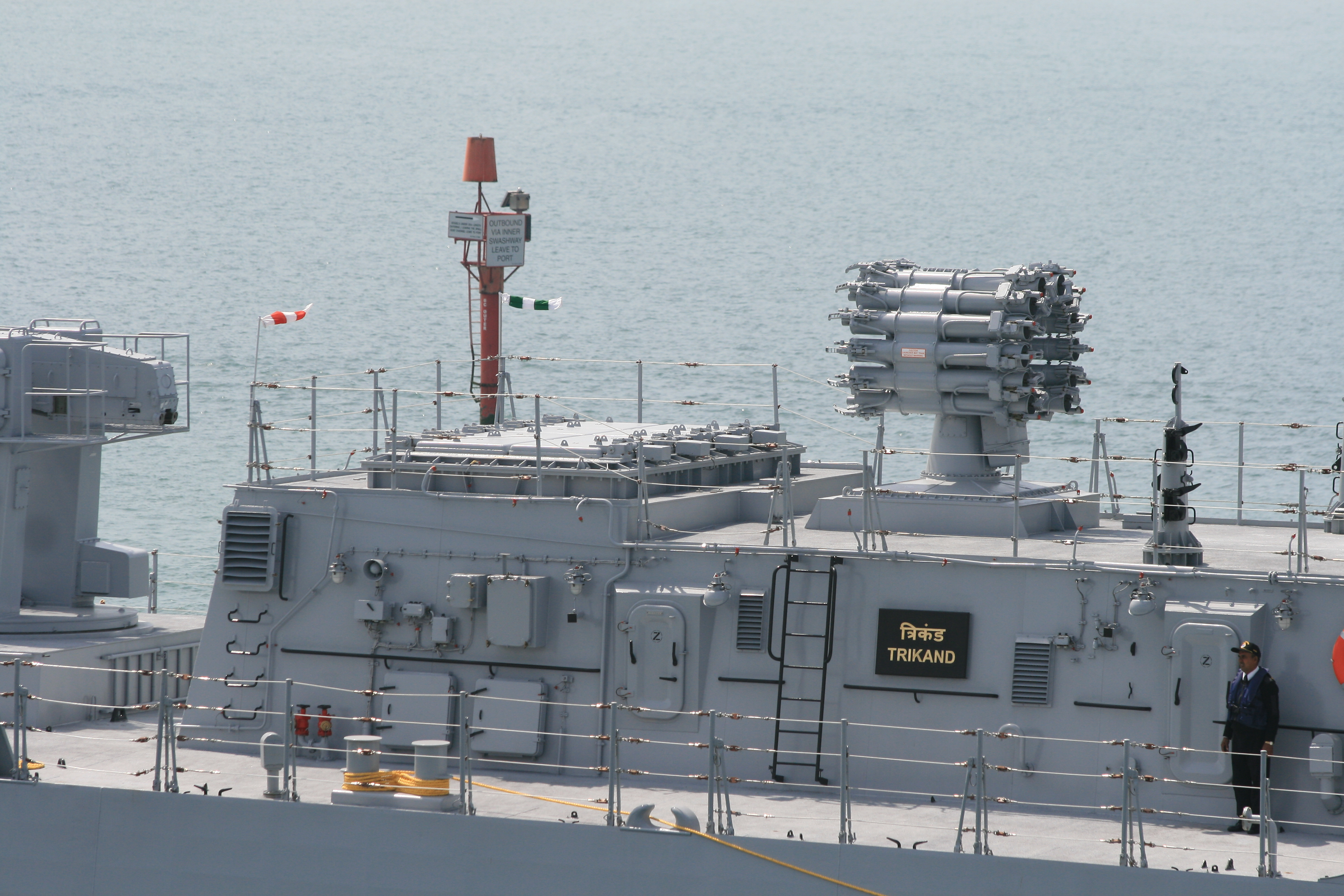
5. **YJ-21 “Carrier Killer” Hypersonic Anti-Ship Missile**Moving from advanced radar systems to their potential targets, China’s military parade also prominently featured a new generation of offensive weaponry, including the YJ-21, famously dubbed the “carrier killer.” This hypersonic anti-ship missile is specifically intended for use against high-value naval targets, primarily aircraft carriers, which are often the lynchpins of an adversary’s naval power projection. Its development signals a strategic focus on anti-access/area-denial (A2/AD) capabilities.
The YJ-21 is reported to be capable of supersonic speeds, a critical attribute for evading traditional naval defense systems designed to intercept slower, sub-sonic missiles. Its high velocity drastically reduces the reaction time available to defending vessels, making interception considerably more challenging. According to a Bloomberg report, the YJ-21 likely has a range exceeding 600 kilometers, allowing it to be launched from a safe distance, further complicating defensive efforts.
The term “hypersonic” implies not just extreme speed—traveling at least five times the speed of sound—but often also the ability to maneuver dynamically during flight, making its trajectory highly unpredictable. This combination of speed and maneuverability presents a formidable challenge to existing missile defense systems. Such characteristics are tailored to overwhelm and bypass the layered defenses typically employed by large naval combatants, including aircraft carriers.
The unveiling of the YJ-21 sends a clear and “not-so-subtle message to Taiwan and Washington that China has the ability to threaten American warships,” as noted by Timothy R. Heath, a senior researcher at RAND. Its capabilities are designed to increase the vulnerability of U.S. Navy ships operating in the western Pacific, particularly from the 7th Fleet headquarters in Japan, by presenting a threat that is difficult to avoid or counter, thereby altering regional power dynamics.
Military equipment: YJ-21
IsMissile: true
Name: YJ-21
Type: Hypersonic weapon,anti-ship ballistic missile
Origin: China
Length: 8.3 m
VehicleRange: convert
Filling: Conventional
Speed: convert
Manufacturer: China Academy of Launch Vehicle Technology
Service: 2022–present
UsedBy: People’s Liberation Army Navy
LaunchPlatform: Type 055 destroyer
Categories: All stub articles, Anti-ship missiles of the People’s Republic of China, Articles containing simplified Chinese-language text, Articles with short description, Ballistic missiles of the People’s Republic of China
Summary: The YJ-21 (Chinese: 鹰击-21; pinyin: Yīngjī-èryāo; lit. ‘eagle strike 21’) is a Chinese hypersonic anti-ship ballistic missile.
Get more information about: YJ-21

6. **YJ-19 Scramjet Hypersonic Anti-Ship Missile**Among the four new models of anti-ship missiles unveiled during the parade, the YJ-19 stands out for its apparent use of a “scramjet” engine. This propulsion system is highly advanced, functioning by burning its fuel in an airflow moving at supersonic speed, a design principle that inherently contributes to the missile’s exceptionally high velocity. The YJ-19, like its hypersonic counterparts, is designed to challenge the effectiveness of conventional naval defenses.
The features of the YJ-19 suggest a highly unpredictable flight path, a characteristic inherent to many advanced hypersonic weapons. This unpredictability, combined with its speed, makes it incredibly difficult for enemy defense systems to calculate an interception solution. Furthermore, the YJ-19 is believed to have the ability to fly its last leg at a lower altitude than traditional ballistic missiles. This “sea-skimming” capability, even if at a slightly slower speed than its high-altitude phase, further complicates detection and interception by shipboard radars and anti-missile systems.
Eric Heginbotham, a principal research scientist at the Massachusetts Institute of Technology, highlighted these unique flight characteristics as making the missile particularly challenging for naval forces. The strategic implications of such missiles are profound, as they aim to diminish the effectiveness of conventional naval combat groups and their defensive capabilities. The combination of high speed, maneuverability, and a low-altitude terminal phase maximizes the probability of striking high-value naval targets.
While the immediate operational status of the YJ-19 and other new missiles remains somewhat unclear, their public display serves as a potent indicator of China’s sustained and significant investment in advanced anti-ship capabilities. The potential impact on U.S. Navy ships’ vulnerability will depend significantly on the scale of their production and deployment, suggesting that these are not merely prototypes but systems intended for eventual widespread integration into China’s naval strategy.
Military equipment: List of anti-ship missiles
Categories: All articles with unsourced statements, Anti-ship missiles, Articles with short description, Articles with unsourced statements from July 2018, Lists of weapons
Summary: This is a list of anti-ship missiles.
Get more information about: List of anti-ship missiles

7. **Extra-Large Uncrewed Underwater Vehicles (XLUUVs) and the AJX002 Sea Drone**Venturing into the silent depths, China’s military parade also debuted two sleek submersible drones, signaling Beijing’s burgeoning ambitions to compete with the United States and other naval powers beneath the waves using “extra-large uncrewed undersea vehicles” (XLUUVs). These autonomous underwater systems represent a significant investment in unmanned warfare, aiming to expand China’s operational reach and capabilities in the sub-surface domain.
China operates what is reported to be the world’s largest XLUUV program, with at least five distinct types already in the water. The two models displayed during the parade included one that was approximately 60 feet long and torpedo-shaped with a smooth hull, while the other featured small masts potentially used for communications or sensors. The torpedo-shaped hulls and pump-jet propulsion systems of these vehicles explicitly reveal their design for stealthy operation, making them difficult to detect.
One specific model, the AJX002 sea drone, is estimated to be around 60 feet long and features four lifting lugs along its hull, suggesting it is crane-assisted for deployment and recovery. Jennifer Parker, an expert at the National Security College of Australian National University and a former anti-submarine warfare officer in the Australian Navy, noted that the sheer number and range of types of undersea vehicles China is developing indicate that “they may be more advanced in this endeavor than other countries.”
Furthermore, Ms. Parker suggested that China might be looking to arm some of its XLUUV models, pointing to the features of the AJX002. Given its lack of masts and considerable size, she posited, “It looks like it’s weaponized. Could be some sort of self-propelled mine or torpedo-like capability.” This potential for armed autonomy underwater significantly enhances China’s strategic options for reconnaissance, surveillance, and engagement in maritime environments, presenting a new dimension of naval power projection.
Having explored the intricate radar systems and advanced anti-ship capabilities that are redefining naval and aerial engagement, our journey now shifts to other crucial facets of China’s military modernization. Beijing’s strategic vision extends far beyond these immediate battlefronts, encompassing a robust build-up of its strategic nuclear arsenal, the development of sophisticated space defense mechanisms, and a profound commitment to future unmanned and ground warfare systems. These elements, showcased with increasing frequency and sophistication, collectively highlight a comprehensive effort to project power and secure national interests across all domains.
This section will delve into the strategic nuclear forces that form the bedrock of China’s deterrence, the technologies aimed at dominating the ultimate high ground of space, and the innovative unmanned and ground systems poised to reshape future combat scenarios. These advancements not only enhance China’s defensive and offensive capabilities but also signal a broader rebalancing of global military power, prompting a re-evaluation of defense strategies and international security dynamics.
Military equipment: Deep Drone 8000
Speed:: 3 knots (5 knots optional)
Service:: US Navy
Max Depth:: 8,000 ft
Load:: 300 lbs.
Electronics:: Auto Controls – depth, altitude, heading
Categories: Ships and Submarines, Navy Ships and Submarines, Special Mission Ships and Submarines, Navy Equipment
Get more information about: Deep Drone 8000

8. **China’s Strategic Nuclear Triad**The recent military parade offered an unprecedented look into China’s expanding nuclear capabilities, presenting a concentrated display of its “land, sea and air triad strategic nuclear forces.” This triad, consisting of land-based intercontinental ballistic missiles, submarine-launched missiles, and air-launched nuclear weapons, represents the cornerstone of any major power’s deterrent posture, ensuring retaliatory strike capabilities even under severe attack. The unveiling of such a comprehensive force signals a matured and modernized nuclear arsenal.
Prominently featured were three distinct types of nuclear-capable intercontinental ballistic missiles: the Dong Feng-61, Dong Feng-31BJ, and the Dong Feng 5C. These systems, publicly showcased for the first time, demonstrate China’s commitment to enhancing its long-range strike capabilities. The presence of these missiles underlines a strategic imperative to possess a credible and resilient nuclear deterrent, capable of reaching distant targets across the globe.
Adding to this land-based prowess, the parade also introduced China’s first air-launched nuclear missile, the JL-1, displayed on a military truck. This development signifies a critical step in completing the air leg of the nuclear triad, providing a flexible and survivable platform for nuclear delivery. The JL-1, along with the JL-3 (mentioned in the context of the triad), represents the aerial component that could be carried by strategic bombers, further diversifying China’s nuclear options and enhancing the overall resilience of its deterrence.
The public display of these integrated nuclear forces, from land to air, underscores a significant expansion and modernization effort. It indicates Beijing’s strategic intent to ensure that its nuclear deterrent remains robust and capable of surviving a first strike, thereby maintaining strategic stability in an increasingly complex global environment. This advancement is a clear message of China’s resolve in the domain of strategic weaponry.
Military equipment: Nuclear triad
Categories: All Wikipedia articles in need of updating, All Wikipedia articles written in American English, All accuracy disputes, All articles with style issues, All articles with unsourced statements
Summary: A nuclear triad is a three-pronged military force structure of global-range land-based intercontinental ballistic missiles (ICBMs), submarine-launched ballistic missiles (SLBMs), and strategic bombers with nuclear bombs and missiles. More broadly, it can sometimes be used to mean any nuclear force with land, sea, and air basing, and more limited range. Countries build nuclear triads to eliminate an enemy’s ability to destroy a nation’s nuclear forces in a first-strike attack, which preserves their own ability to launch a second strike and therefore increases their nuclear deterrence.
Four countries are known to have complete nuclear triad: the United States, Russia, India, and China. Israel possesses all three delivery platforms but its Popeye SLCMs and fighter bombers are not intercontinental range.
Get more information about: Nuclear triad
Read more about: China’s Parade of Power: A New Chapter in the World’s Greatest Military Rivalry, Signifying a Shifting Global Order
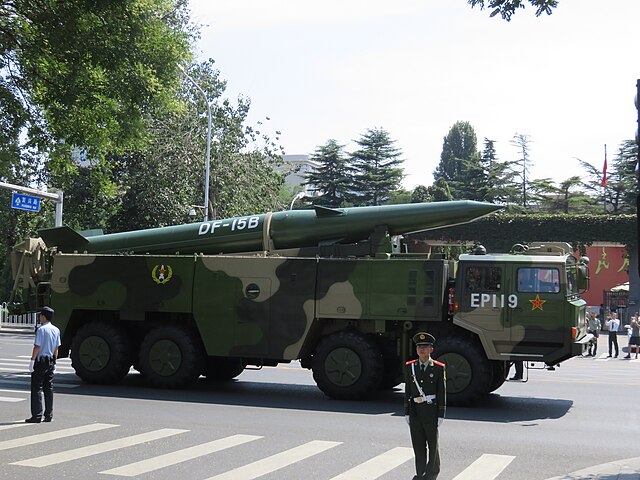
9. **The Dong Feng 5C Intercontinental Strategic Nuclear Missile**Among the nuclear-capable intercontinental ballistic missiles showcased, the Dong Feng 5C stands out for its reported advanced capabilities, positioning it as a particularly formidable component of China’s strategic arsenal. State media, Global Times, indicated that this missile possesses an estimated range exceeding 20,000 kilometers, a reach that places the “entire globe under its strike range.” Such an extensive range dramatically expands China’s ability to project strategic power.
Beyond its impressive range, the Dong Feng 5C has reportedly undergone significant improvements in both defense penetration and precision. These enhancements are crucial for ensuring the missile’s ability to overcome sophisticated missile defense systems and deliver its payload accurately to distant targets. The focus on these attributes highlights a drive to develop a highly effective and reliable intercontinental strike capability.
Moreover, experts have suggested that a new variant of the Dong Feng 5C is capable of carrying up to 12 warheads on a single missile. This Multiple Independently-targetable Reentry Vehicle (MIRV) capability significantly increases the destructive potential and effectiveness of each missile launch. By allowing a single missile to strike multiple targets or saturate defenses, MIRV technology enhances the survivability and impact of China’s strategic force.
The appearance of the DF-5C, particularly with these advanced specifications, directly supports U.S. military assessments regarding China’s ongoing expansion of its intercontinental missile force, including the construction of missile silo fields in its northern deserts. Its public display, therefore, serves as a powerful acknowledgment of these strategic advancements and China’s evolving nuclear posture, demonstrating its commitment to modernizing its strategic capabilities.
Military equipment: DF-4
IsMissile: true
Name: DF-4/CSS-3
Type: ICBM
Origin: People’s Republic of China
VehicleRange: 5,500 km
Filling: One,
Yield: 3.3 Mt
Engine: Liquid fueled
Guidance: Astro-inertial guidance
Accuracy: 1.5 km
Speed: ?
Length: 28.05 m
Diameter: 2.25 m
Weight: 82,000 kg
PayloadCapacity: 3300 kt
Manufacturer: Factory 211 (Capital Astronautics Co.)
UnitCost: ?
Service: 1975/1976–present
UsedBy: People’s Liberation Army Rocket Force
Categories: All articles with dead external links, Articles containing simplified Chinese-language text, Articles with dead external links from January 2018, Articles with permanently dead external links, Articles with short description
Summary: The Dong Feng 4 (Chinese: 东风-4; pinyin: Dōng Fēng Sì; lit. ‘East Wind 4’) or DF-4 (also known as the CSS-3) is a first-generation two-stage Chinese intercontinental ballistic missile with liquid fuel (Nitric acid/Unsymmetrical dimethylhydrazine). It was thought to be deployed in limited numbers in underground silos beginning in the late 1970s and early 1980s. The Dong Feng 4 has a takeoff thrust of 1,224.00 kN, a takeoff weight of 82000 kg, a diameter of 2.25 m, a length of 28.05 m and a fin span of 2.74 m. The range of the Dong Feng 4, which is equipped with a 2,190 kg nuclear warhead with 3.3 Megaton yield, with a nominal range of 5,500 km. This gives it sufficient range to strike targets as far away as Russia, India, and American bases in the Pacific. The missile uses an inertial guidance system, resulting in a large CEP of 1,500 meters. As of 2017, 10–15 launchers are deployed.
Get more information about: DF-4
Read more about: Beyond the Spectacle: What China’s Military Parade Reveals for Asia and a Reordering World

10. **HQ-29 Space Defense System**In a prominent display of aerial power, China unveiled the HQ-29 space defense system for the first time during the parade, signaling its growing capabilities in the critical domain of outer space. This system is reported to be capable of taking down foreign satellites, marking a significant development in anti-satellite (ASAT) technology. The ability to neutralize adversary satellites could be a game-changer in future conflicts, affecting communication, intelligence, and navigation systems globally.
While specific details about the HQ-29’s exact capabilities remain largely unpublicized, its large size, as observed during the parade, implies an extreme operational range. This characteristic has led to comparisons with highly advanced systems such as the US Navy’s SM-3 Block IIA, which is known for its extended reach and versatility, capable of being launched from both land and ship platforms. Such a comparison underscores the perceived sophistication and potential threat posed by the HQ-29.
The development and display of the HQ-29 highlight China’s strategic recognition of space as a contested domain and its commitment to developing capabilities to protect its own space assets while potentially denying access or use of space to adversaries. Control or denial of space can significantly influence the outcome of modern military operations, making systems like the HQ-29 critical components of a comprehensive defense strategy.
This advancement signifies China’s ongoing efforts to build a robust and multi-layered space defense architecture. The HQ-29’s debut sends a clear message about Beijing’s ambition to be a leading power in space warfare capabilities, further complicating the global security landscape and emphasizing the increasing militarization of space.
Military equipment: HQ-9
IsMissile: true
Name: HQ-9
Caption: An HQ-9 portable launcher during China’s 60th anniversary parade in 2009, Beijing
Origin: China
Type: Surface-to-air missile,Anti-satellite weapon,Anti-ballistic missile
UsedBy: #Operators
Manufacturer: China Aerospace Science and Industry Corporation
Service: 2001 – present
Weight: cvt
Length: cvt
Speed: Mach number
VehicleRange: 120 km (HQ-9)
Ceiling: 50 km (HQ-9B)
FillingWeight: 180 kg
Guidance: Semi-active radar homing
Propellant: Solid fuel
LaunchPlatform: HQ-9 ground-launched,
HHQ-9 surface-launched
Categories: All Wikipedia articles in need of updating, All articles lacking reliable references, All articles needing additional references, All articles that may contain original research, Anti-ballistic missiles of the People’s Republic of China
Summary: The HQ-9 (simplified Chinese: 红旗-9; traditional Chinese: 紅旗-9; pinyin: Hóng Qí-9; lit. ‘Red Banner-9’; NATO reporting name: CH-SA-9.) is a long-range semi-active radar homing (SARH) surface-to-air missile (SAM) developed by the People’s Republic of China. The naval variant is the HHQ-9 (simplified Chinese: 海红旗-9; traditional Chinese: 海紅旗-9; pinyin: Hǎi Hóng Qí-9; lit. ‘Sea Red Banner-9’). The HQ-9 and its export variants are developed by China Aerospace Science and Industry Corporation (CASIC).
Get more information about: HQ-9

11. **Directed Energy Laser Weapons**China’s military parade also showcased its advancements in directed energy weapon technology, displaying two distinct versions of laser weapons. One variant was explicitly designed for naval air defense, indicating a focus on protecting surface vessels from aerial threats. The other, mounted on a truck, was intended to provide defense for ground troops, demonstrating a versatile application of laser technology across different operational environments.
These laser weapons are being developed primarily as a defense against drone attacks and other low-end threats, a growing concern in modern warfare. The appeal of laser systems lies in their cost-effectiveness compared to traditional interceptors like missiles or radar-directed guns. Unlike conventional munitions, laser weapons offer a potentially unlimited magazine capacity, provided there is a continuous power source, making them highly efficient for neutralizing numerous smaller threats.
The broader spectrum of China’s anti-drone systems displayed at the parade included a combination of missile guns, high-energy laser weapons, and high-power microwave weapons. This comprehensive approach to countering unmanned aerial systems underscores the strategic importance China places on air defense against evolving asymmetric threats. The integration of various technologies suggests a layered defense strategy aimed at effectively engaging a wide range of aerial targets.
By investing in directed energy weapons, China is pursuing a cutting-edge path in defense technology. These systems not only offer a new means of defense against increasingly prevalent drone threats but also represent a shift towards more sustainable and economically viable defensive capabilities, potentially reshaping tactical engagements in both naval and ground warfare scenarios.
Military equipment: Directed-energy weapon
Categories: All Wikipedia articles written in American English, All articles with dead external links, All articles with unsourced statements, Articles with dead external links from February 2024, Articles with dead external links from June 2012
Summary: A directed-energy weapon (DEW) is a ranged weapon that damages its target with highly focused energy without a solid projectile, including lasers, microwaves, particle beams, and sound beams. Potential applications of this technology include weapons that target personnel, missiles, vehicles, and optical devices.
In the United States, the Pentagon, DARPA, the Air Force Research Laboratory, United States Army Armament Research Development and Engineering Center, and the Naval Research Laboratory are researching directed-energy weapons to counter ballistic missiles, hypersonic cruise missiles, and hypersonic glide vehicles. These systems of missile defense are expected to come online no sooner than the mid to late 2020s.
China, France, Germany, the United Kingdom, Russia, India, Israel are also developing military-grade directed-energy weapons, while Iran and Turkey claim to have them in active service. The first use of directed-energy weapons in combat between military forces was claimed to have occurred in Libya in August 2019 by Turkey, which claimed to use the ALKA directed-energy weapon. After decades of research and development, most directed-energy weapons are still at the experimental stage and it remains to be seen if or when they will be deployed as practical, high-performance military weapons.
Get more information about: Directed-energy weapon
Read more about: Beyond the Spectacle: What China’s Military Parade Reveals for Asia and a Reordering World

12. **New Airborne Combat Vehicles and Remote-Controlled Armored Buggies**The ground assault groups featured in the parade revealed significant advancements in China’s capabilities for rapid deployment and enhanced ground warfare. Among these were new armored ground vehicles designed with the unique ability to be dropped from transport planes. This feature highlights a strategic investment in forces capable of swift insertion behind enemy lines or rapid response to emergent situations far from established bases.
These airborne combat vehicles were equipped with what appeared to be periscope-like viewers, allowing troops to maintain situational awareness and observe their surroundings from within the armored protection of the vehicle. This design detail underscores a focus on soldier protection and operational effectiveness, even in high-risk scenarios characteristic of airborne assaults.
Joshua Arostegui, research director of the China Landpower Studies Center at the U.S. Army War College, noted that these new vehicles indicate China’s investment in potential rapid deployment capabilities, not only for contingencies like Taiwan but also for operations extending far beyond its borders. He emphasized that “adding such advanced armor to the airborne corps will give these light infantry forces much more firepower and protection” in critical situations.
In addition to the airborne combat vehicles, the parade also showcased remote-controlled armored buggies, designed with specialized functions such as clearing mines and picking up wounded soldiers. While these systems offer critical support capabilities on the battlefield, Mr. Arostegui cautioned that “the biggest issue with these systems is going to be cost and repair,” pointing to the logistical challenges inherent in deploying such advanced robotics in the field.
Military equipment: M551 Sheridan replacement process
Categories: Abandoned military projects of the United States, Articles with short description, Light tanks of the Cold War, Light tanks of the United States, Post–Cold War light tanks
Summary: The Armored Gun System (AGS) was a U.S. Army competition in the 1990s to design a light tank to replace the M551 Sheridan and TOW-equipped HMMWVs. It was the ultimate incarnation of several research programs run in the 1970s with the aim of providing air-mobile light infantry forces with the firepower needed to last in the battlefield.
There were three primary entries into the AGS contest. Cadillac Gage offered its Stingray light tank with the traditional four-man layout. FMC offered the Close Combat Vehicle Light (CCVL) with a three-man configuration. Teledyne offered its Expeditionary tank which had a two-man layout with an unmanned turret.
In 1992, FMC’s design was selected and given the name M8 Armored Gun System. However, purchases of the M8 were cancelled in 1997. The role was ultimately filled by the Stryker M1128 mobile gun system, which was retired in 2022. In 2017, the Army requested proposals for the Mobile Protected Firepower requirement. The Army downselected BAE Systems’ variant of the M8 AGS and General Dynamics Land Systems Griffin II. The Army reportedly disqualified BAE’s proposal in March 2022. The GDLS Griffin II light tank was selected in June 2022. The initial contract was for 96 vehicles with first delivery by the end of 2023. The first units were expected to be equipped with it by 2026. It was officialy designated M10 Booker in June 2023. It was announced on May 2nd, 2025 that the M10 program would be cancelled.
Get more information about: M551 Sheridan replacement process
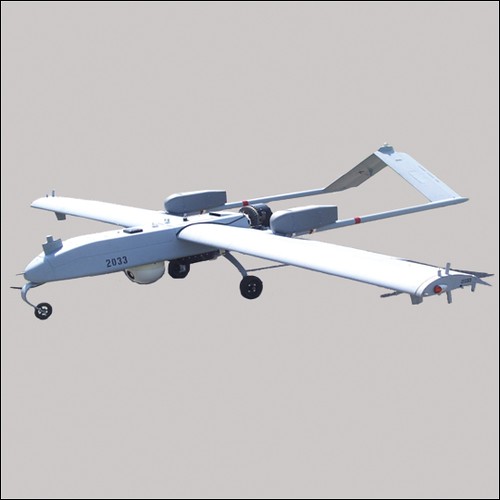
13. **Unmanned Aircraft: Loyal Wingmen Drones**The parade provided a compelling glimpse into the future of aerial combat with the display of large drones that bore a striking resemblance to small fighter jets, parked on the ground atop military trucks. This exhibition was a clear indicator of China’s strategic plans to integrate manned and unmanned aircraft in future warfare scenarios, embracing a concept often referred to as “loyal wingmen” drones.
The core idea behind these loyal wingmen is that piloted jets would fly alongside these AI-powered drones. These unmanned companions could then perform a variety of crucial tasks, such as conducting surveillance, actively attacking enemy aircraft, and serving as a protective screen to block incoming missiles aimed at the manned fighters. This synergistic approach aims to enhance the effectiveness and survivability of piloted aircraft while mitigating risks to human pilots.
Andreas Rupprecht, a Germany-based expert on Chinese military aviation, highlighted the sheer number of large drones and unmanned planes featured in the parade as evidence of China’s substantial commitment to this burgeoning field. He observed that “In many technological areas, it is in the fast lane — sometimes on par with, or even ahead of, leading powers,” suggesting China’s rapid progress in unmanned aerial systems.
Despite their impressive appearance on the ground, none of the unmanned planes were shown in flight during the parade, indicating that these advanced systems may still be under development or undergoing further refinement. Nevertheless, their prominent display signals a clear strategic direction: China is heavily invested in harnessing artificial intelligence and unmanned systems to gain a decisive edge in future air combat.
Military equipment: Manned-unmanned teaming
Categories: All articles containing potentially dated statements, All articles with dead external links, All articles with unsourced statements, All self-contradictory articles, Articles containing potentially dated statements from March 2023
Summary: Manned-unmanned teaming refers to the collaborative operation of manned and unmanned systems, typically in military or aerospace contexts, to enhance mission effectiveness. It enables human operators to control, coordinate, or supervise autonomous or semi-autonomous platforms, such as drones or robotic systems, to improve situational awareness, reduce risk, and optimize performance in complex environments.
A loyal wingman is a proposed type of unmanned combat air vehicle (UCAV) which incorporates artificial intelligence (AI) and is capable of collaborating with the next generation of crewed combat aircraft, including sixth-generation fighters and bombers such as the Northrop Grumman B-21 Raider. Also unlike the conventional UCAV, the loyal wingman is expected to be capable of surviving on the battlefield but to be significantly lower-cost than a crewed aircraft with similar capabilities. In the US, the concept is known as the collaborative combat aircraft (CCA). CCAs are intended to operate in collaborative teams with the next generation of manned combat aircraft, including sixth-generation fighters and bombers such as the Northrop Grumman B-21 Raider. Unlike the conventional UCAVs, the CCA incorporates artificial intelligence (AI), denoted an “autonomy package”, increasing its survivability on the battlefield. It is still expected to cost much less than a manned aircraft with similar capabilities. The US Air Force plans to spend more than $8.9 billion on its CCA programs from fiscal years 2025 to 2029, with an additional $661 million planned for fiscal year 2024. The success of the CCA program may lessen the need for additional manned squadrons.
Get more information about: Manned-unmanned teaming

14. **Robot Dogs and “Intelligentised Warfare”**Venturing into the realm of ground robotics, China’s military parade also notably featured a legion of robot dogs, prominently displayed on top of armored vehicles. This showcase underscored Beijing’s rapidly growing emphasis on what it terms “intelligentised warfare,” a doctrine that integrates artificial intelligence and advanced robotics into military operations to enhance combat effectiveness and reduce human risk.
These robot dogs are envisioned for diverse roles within the battlefield, ranging from reconnaissance and surveillance to providing direct combat support. Their potential utility extends to being weaponized, enabling them to engage in direct combat scenarios alongside or in place of human soldiers. Such capabilities promise to introduce a new layer of autonomy and lethality to ground forces, fundamentally altering the dynamics of close-quarters engagements.
The deployment of such sophisticated robotic systems points to a military modernization strategy that prioritizes technological superiority and innovation. By integrating artificial intelligence and advanced robotics, China aims to create more agile, adaptable, and resilient fighting forces, capable of operating in complex and contested environments with greater efficiency and precision. This signals a future where unmanned systems play an increasingly central role in land-based operations.
The focus on “intelligentised warfare” reflects a broader trend among global military powers, but China’s aggressive development and public display of these systems demonstrate a clear intention to lead in this technological frontier. While the full scope of their operational deployment remains to be seen, the presence of these robot dogs at such a high-profile event confirms their importance in China’s evolving vision for future ground combat and military dominance.
As we conclude this in-depth exploration of China’s newest military technologies, it becomes abundantly clear that Beijing’s modernization efforts are multifaceted and deeply strategic. Beyond the imposing tanks and long-range missiles, the true story lies in the sophisticated web of sensor technologies, integrated defense systems, and revolutionary unmanned platforms. From radar systems that can unmask stealth aircraft to hypersonic missiles that redefine naval engagement, and from a robust nuclear triad to space defense capabilities, China is systematically building a military force designed to challenge existing paradigms.
The unveiling of these advanced systems — whether in strategic nuclear deterrence, space-based defense, or the burgeoning fields of unmanned and ground robotics — presents a compelling narrative of a nation not merely catching up, but actively forging new frontiers in military science. These developments, driven by an unwavering commitment to technological superiority, are poised to significantly reshape the global security landscape, demanding a continuous re-evaluation of defense postures and international relations for years to come. The message is unambiguous: China’s military might is not just growing; it is evolving, strategically and profoundly.

